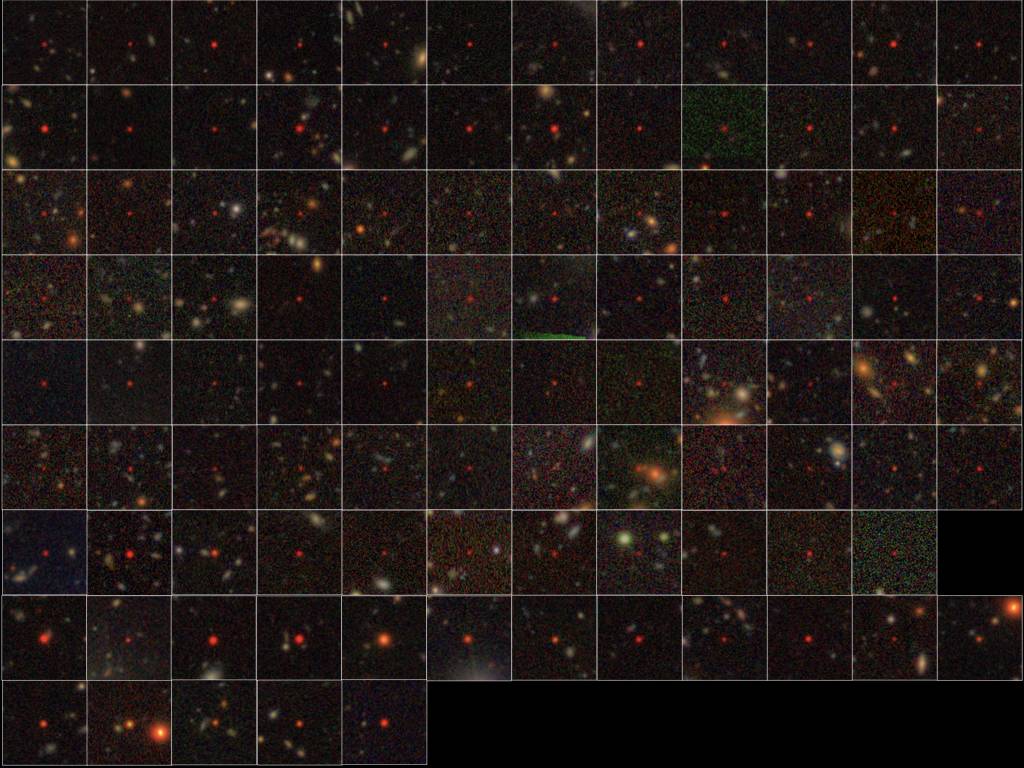Astronomers from Japan, Taiwan, and Princeton University(USA) discovered 83 quasars fed by supermassive black holes in the distant Universe, at a time when its age was less than 10 percent of the current value. The discovery significantly increases the number of space monsters known in that era, and for the first time shows how common they were. In addition, it gives a new idea of the influence of black holes on the physical state of gas in the first billion years of the history of the Universe.
It is noteworthy that such massive dense objects could form so soon after the Big Bang. Understanding how black holes formed in the early Universe and how common they were is an open problem of modern cosmological models.
-Michael Strauss, a research participant at Princeton University
Supermassive black holes found in the centers of galaxies can be millions or even billions of times more massive than the sun. Although they are common today, it is unclear when they first formed and how many of them existed in the early Universe.
A supermassive black hole becomes visible when gas absorption causes it to shine like a quasar. Previous studies have found only the brightest of them with the most “heavy” black holes, but astronomers have identified astronomers with a population of dimmer quasars, driven by black ones, in the data obtained with the Hyper Suprime-Cam instrument (HSC) on the Subaru telescope. holes with masses comparable to most black holes observed in the modern universe.
Having identified candidates for quasars, the team conducted an intensive observation campaign using three telescopes: Subaru, Gran Telescopio Canarias and Gemini South Telescope. The survey revealed 83 unknown very distant quasars. Together with the 17 quasars defined earlier in the study region, scientists found that there is about one supermassive black hole per cubic giga-light year. The distance to the newly discovered quasars was about 13 billion light years, that is, they already existed during the infancy of the Universe, 800 million years after the Big Bang.
It is believed that hydrogen in the universe was once neutral, but was reionized – split into its constituent protons and electrons – several hundred million years after the Big Bang, when the first generation stars, galaxies and supermassive black holes were born. However, astronomers do not know what produced the incredible amount of energy needed for this process. Hypothetically, in the early Universe there were much more quasars than was discovered before this moment, and it was their radiation that reionized hydrogen.
However, as the researchers write, the newly discovered quasars show that this is not the case; their number still does not explain reionization. Therefore, it was caused by another energy source, most likely, by numerous galaxies, which began to form in the young Universe. But still, thanks to distant quasars, researchers will learn more about the formation and early evolution of supermassive black holes, comparing the measured number density and luminosity distribution with the predictions of theoretical models.
Based on the results achieved so far, the team is eagerly awaiting the discovery of even more distant black holes and the dating of the moment when the first supermassive monster appeared in the Universe.
83 supermassive quasars discovered in the early universe
Click To Tweet
The post 83 supermassive quasars discovered in the early universe appeared first on Upcosmos.com.
